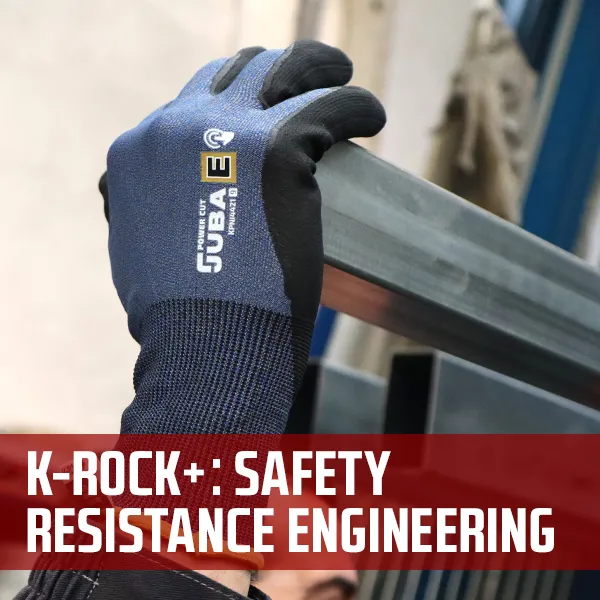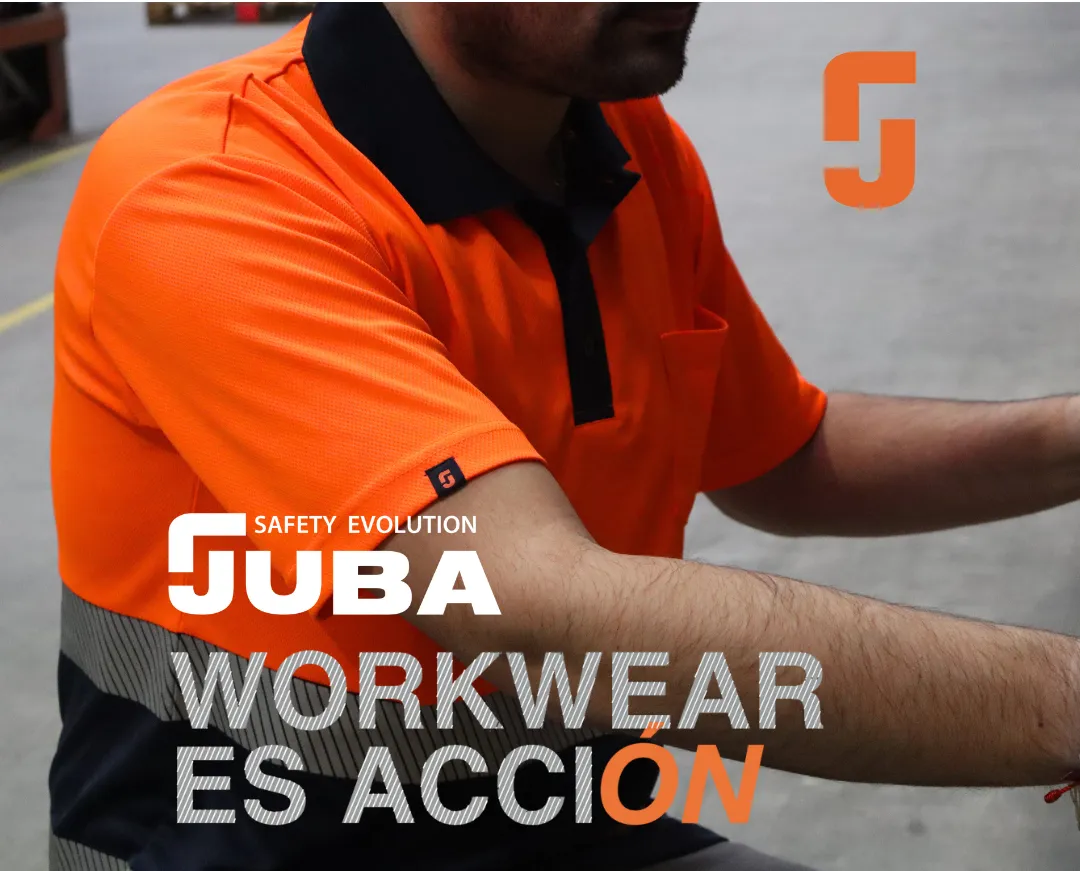Clothing Standards
General requirements for protective clothing.
The general requirements for protective clothing are specified in international standard EN ISO 13688:2013. This standard specifies general performance requirements for ergonomics, innocuousness, size designation, ageing, compatibility and marking of protective clothing and the information to be supplied by the manufacturer with the protective clothing. Garments must be designed and manufactures to offer the user maximum comfort. The components and materials used must not damage the user or cause allergic reactions, irritation or injuries. Sizes range must have the body measurements.
Should be used in combination with another standard that includes specific protection requirements. Therefore, a CAT I, II or III garment should be certified to standard EN ISO 13688:2013+A1:2021 + another standard.
Personal protective equipment - Knee protectors for work in the kneeling position.
The standard specifies the requirements for knee protection during work in the kneeling position.
Type 1 ¬ Is normally applied directly on the knee.
Type 2 ¬ Separate knee protector added to work trousers with a knee protector pocket.
Protection level 0: No protection.
Protection level1: Plant with small irregularities.
Protection level 2: Very uneven ground.


Protective Clothing against Cold / Temperatures below -5ºC.
Standard for garments that protect against cold environments, with a combination of damp, wind and temperature below -5°C. The technical fabrics mean that the garment is breathable and warm.
Y(B) ICLER en [m² K/W] Medium thermal insulation in a movable mannequin with sub-garments B (MANDATORY).
AP Class of air permeability ( Class 1 to 3) (MANDATORY).
WP Resistance to water penetration (optional. In case the piece of clothing has not been tested, it will be marked as X) (OPTIONAL).

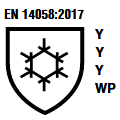
Garments for Protection Against Cold Environments. (-5ºC and higher).
This standard specifies requirements and test methods for the performance of garments for protection against the effects of cold environments. The protective effects and requirements of footwear, gloves and separate head wear are excluded from the scope of this standard
Y:RCT: Thermal resistance. (MANDATORY).
Y:AP: Air permeability (OPTIONAL).
Y:ICLER Thermal insulation mandatory for Rct class 4 Optional for classes 1 to 3. (OPTIONAL).
WP: Optional if tested by the manufacturer (OPTIONAL).
Note: X: Indicates that the garment has not undergone the test.

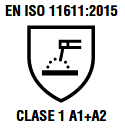
Protective clothing for welding and allied processes
This standard specifies minimum basic safety requirements and test methods for protective clothing to protect the wearer's body from sparks, spatter and drops of molten metal produced by welding and allied processes.
CLASS 1: Light formation of splashes and drips. 15 drips.
CLASS 2: Strong formation of splashes and drips. 25 drips.
If the garment offers limited flame protection, it was indicated with A1+A2


Protection against wet weather / -5ºC and above.
This standard establishes the material and the seams for protective garments against rain, snow, fog and damp. The garments are made with particular attention to the seams, in order to guarantee maximum comfort.
- Y WP: Water penetration (class 1 to 4) (MANDATORY)
- Y RET: Resistance to water vapour. (class 1 to 4) (MANDATORY)
- R Rain tower test (OPTIONAL) will be replaced by an X if it has not been tested (OPTIONAL)
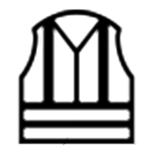

Resistance to penetration of chemicals.
Test methods and performance classification of chemical protective clothing materials, seams, joins and assemblages. It allows for materials to be classified according to certain characteristics in the following paragraphs:
4.4 Resistance to abrasion.
4.7 Resistance to trapezoidal tearing.
4.9 Resistance to traction.
4.10 Resistance to perforation.
* We highlight these points because the DELTA apron was only tested for these points.



Aprons, Trousers and Vests protecting against cuts and stabs by hand knives
The standard specifies the minimum requirements for protective clothing to be worn when using hand knives. Used in tasks where a sharp knife moves towards the user's body.
Level 1: they provide some protection for light work where there are no strong cutting movements towards the body. (Pictogram a).
Level 2: they are suitable for use at slaughterhouses and de-boning operations and in processing industries where knives are aimed at the body. Also includes wide blade knives in cutting operations where the tip of the knife may be aimed at the user’s body. (Pictogram b).

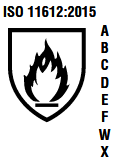
Protective clothing to protect against heat and flame
This standard defines the performance of clothing designed to protect the entire body from heat and flames. It defines the requirements for overalls and 2-piece suits using “ad hoc” materials and specific design requirements that guarantee a performance level to comply with the standard, governed by different heat-resistance values. The garment may be compliant even without reference values from B to W.
A Flame spread
B Convective heat (Class 1 - 3)
C Radiant heat (Class 1 - 4)
D Molten aluminium splashes (Class 1 - 3)
E Molten iron splashes (Class 1 - 3)
F Contact heat (Class 1-3)
W Water resistance
Note: X Indicates that the garment has not been tested.


Protective clothing with limited flame spread
Tested to check that flame does not spread, there is no afterglow, no holes appear and there is no detachment of flaming or molten debris. (Index).

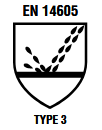

Liquid-tight protection against liquid chemicals / Spray-tight protection against liquid chemicals
Type 3:
- Protection against a pressurised hazardous liquid chemical jet.
- The suit is tested using a nozzle that sprays a pressurised liquid jet at 1m to the vulnerable parts of the suit (zips,seams, etc.).
- Both the material and the seams of the suit are tested.
- The seams of the garment must be completely sealed.
- Additional permeation test indicating permeation detection time [Class].
Type 4:
- Protection against a spayed hazardous liquid chemical.
- The suit is subjected to a liquid spray from 4 nozzles each with a flow rate of 1 l/m for a minute at a distance of 1.5 m.
- The seams of the garment must be completely sealed.
- Additional permeation test indicating permeation detection time [Class].

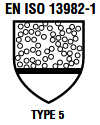
Chemical protection against airborne solid particles
- Protection against hazardous chemical particles.
- The suit is subjected to an environment with a 0.6 μm saline solution in a booth.
- A tester simulates daily activity on a treadmill by means of three exercises within the booth.
- The leak of particles to the inside is assessed [Class].
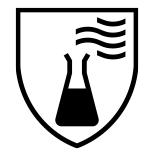

Limited protection against liquid chemical products
- Protection against accidental splashing of liquid chemicals with low hazard or small exposure.
- The suit is subjected to a liquid spray from 4 nozzles each with a flow rate of 0.4 l/m for a minute at a distance of 1.5 m.
- Permeation tests are not performed.


Antistatic protective clothing
- Prevents the concentration of electrostatic charges which could act as a source of ignition in an atmosphere classified as explosive.
- The surface resistance of the material or the electrostatic charge dissipation time is assessed.


Protective clothing against infective agents
- The infective protection is identified by adding a "B” after the type of chemical protection (6B, 5B, 4B, 3B...).
- The penetration of infective agents is tested by mechanical contact with contaminated liquids, resistance to penetration of contaminated liquid aerosols and resistance to the penetration of contaminated solid particles [Classes].


Unventilated protective clothing against contamination by radioactive particles
- Not applicable to ionising radiation.
- Protection against particles with residual nuclear contamination.
- Its leak tightness is assessed as for the Type 5 garment [Class].
